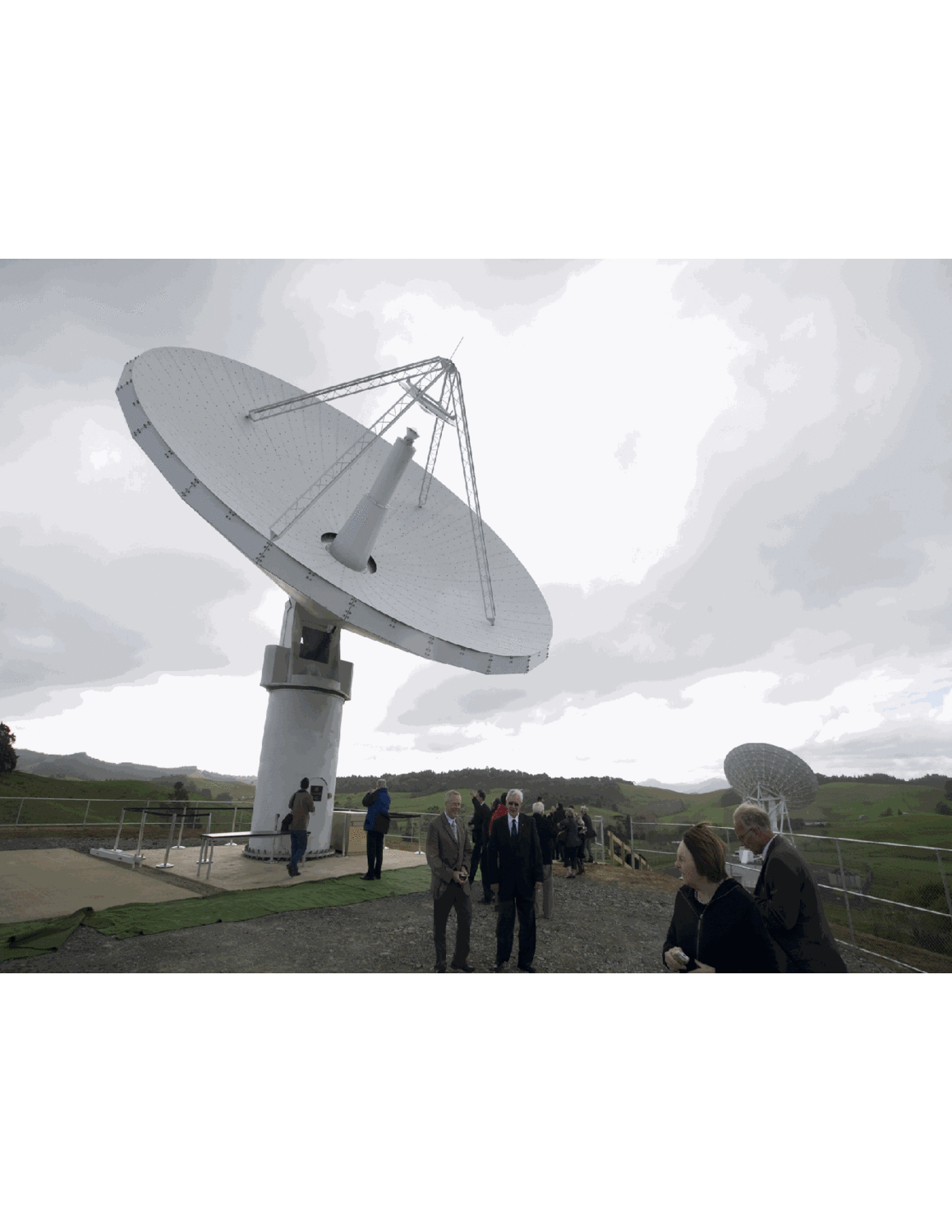Daily Image
22-10-2015Real-time recording of IVS R1 observations
| Submitter: | Simone Bernhart, Stuart Weston, Harro Verkouter |
| Description: | The International VLBI Service (IVS) conducts bi-weekly global geodetic VLBI observations (simultaneous S and X band) to measure the earth orientation parameters (EOPs). The recorded data of the Monday rapid sessions (R1) are uploaded to Bonn (*) for correlation after the observations have finished. The aim is timely distribution of post-correlation analysis results, e.g. the group delay. In an attempt to shorten the time-to-product, first steps were undertaken to make a real-time copy of the 12m Warkworth (New Zealand) dish's data (see image), as it is being recorded on its Mark5 VLBI data recorder. The copy is transferred in real-time over high-speed international research and education networks (REANNZ of New Zealand and GEANT in Europe) onto servers in Bonn (Germany). This recording mode is in direct contrast to e-VLBI, where, if something goes awry with the real-time transfer, science data is immediately lost. In this mode the recorded science data can always be re-transferred at a later time. To support this mode a program to modify an R1's observing schedule was written. It inserts commands to set-up and tear-down the real-time transfer at both ends (e.g. opening a file with the correct scan name in Bonn, configuring the network, starting to transmit when the recording starts etc). Once modified the schedule runs autonomously. On August 24th/25th R1709 was observed in this mode at 256 Mbps data rate (see network throughput plot). The recorded data was transferred separately after the observation, to be able to compare the real-time data with the recorded data. The 'fourfit' program was run on correlations with both data sets and found the same group delay of 120ps, see the attached plots. This special observing mode, where a copy of the data a Mark5 recorder can be siphoned off and transferred in parallel, is made possible by software created at JIVE. The 'jive5ab' software, produced under the succesful EXPReS and NEXPReS projects(**), exploits functionality offered by the MIT Haystack Mark5 VLBI recorder hardware. Having its roots in e-VLBI it implements several network protocols for real-time data transfer. In this case the UDT protocol was used: a reliable protocol over UDP/IPv4. (*) Thursday's R4 session is uploaded to and correlated at USNO's Washington D.C. correlator facility (**) European Commission funded projects to make e-VLBI a production observing mode |
| Copyright: | Simone Bernhart (Institute of Geodesy and Geoinformation, Bonn University), Stuart Weston (Auckland University of Technology) and Harro Verkouter (JIVE) |
| Tweet |  |
